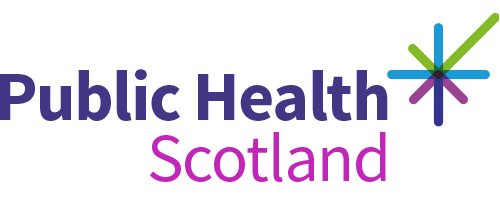- Published
- 03 July 2025
- Journal article
Understanding mechanisms of thrombosis and thrombocytopenia with adenoviral SARS-CoV-2 vaccines: a comprehensive synopsis
- Authors
-
- Source
- Efficacy and Mechanism Evaluation
Full text
Abstract
Background
Thrombosis with thrombocytopenia syndrome is a rare condition known to occur spontaneously or after heparin use. With the advent of COVID-19 vaccines during the pandemic, thrombosis with thrombocytopenia syndrome cases emerged post administration of adenoviral vaccines, termed vaccine-induced immune thrombosis and thrombocytopenia. In response, the thrombosis with thrombocytopenia syndrome consortium was formed to deepen our understanding of this syndrome post vaccination.
Methods
The consortium employed a comprehensive approach across five work packages. This included designing cohort studies covering the entire English population and analysing local linked regional data sets to detect thrombosis with thrombocytopenia syndrome occurrences in real time. Various patient and healthy control specimens, including those from vaccinated individuals, underwent testing for antiplatelet factor 4 antibodies using three different assays. Patients who developed vaccine-induced immune thrombosis and thrombocytopenia after the AstraZeneca (AZD1222) COVID-19 vaccine underwent whole-genome and ribonucleic acid sequencing to identify genetic susceptibility factors. Multiple studies were conducted to investigate the mechanism of antiplatelet factor 4 antibody formation, including assessments of adenoviral vector structure and binding to platelet factor 4. Detailed studies were also conducted to understand the immune response to vaccines, the role of immune complexes involving platelet factor 4 and their effects on proinflammatory cytokines, neutrophil extracellular traps and platelets in the pathogenesis of the syndrome.
Results
Cohort studies revealed a higher risk of arterial and venous thromboses after COVID-19 infection compared to vaccination. Specifically, regarding vaccines, the risk of thrombosis and/or thrombocytopenia was higher after the first dose of the AZD1222 vaccine but not with subsequent doses of. Regional linked data indicated that real-time ascertainment of diseases across multiple acute hospital sites’ secure data environments is not yet feasible at scale. The overall background seroprevalence of antiplatelet factor 4 antibodies was low in healthy individuals, vaccinated individuals and those infected with COVID-19. Whole-genome sequencing did not identify significant variants predisposing to vaccine-induced immune thrombosis and thrombocytopenia, with ongoing work on ribonucleic acid sequencing. An electrostatic interaction between the hexon hypervariable regions of the ChAdOx1 capsid and platelet factor 4 was suggested as a possible mechanism for antiplatelet factor 4 antibody development. Strong immune response drove the formation of neutrophil extracellular traps, significant inflammatory responses and clot formation in distant organs. Platelet activation post immune complex formation against platelet factor 4 was dependent on FcγRIIa but independent of complement, also occurring through binding with c-Mpl. T-cell reactivity against the AZD1222 vaccine indicates potential cross-reactivity with prevalent human adenoviruses.
Conclusions
The consortium’s comprehensive work has uncovered new potential mechanisms of vaccine-induced immune thrombosis and thrombocytopenia and identified novel biomarkers and therapeutic strategies for further development and validation. This is crucial, as the combination of thrombosis and thrombocytopenia, alongside antiplatelet factor 4 antibodies, can occur without exposure to heparin or adenovirus vaccines.
Future considerations
Recommendations include the development of a national reference laboratory and registry for diagnosis and further study of thrombosis with thrombocytopenia syndrome; future vaccine development using the adenoviral vector platform to focus on the reduction of the electrostatic interaction between viral hexons and platelet factor 4; international genomics collaboration; and studies focused on understanding the symptoms suffered by patients as well as strategies to ameliorate them.
Limitations
Direct identification of vaccine-induced immune thrombosis and thrombocytopenia patients was hindered by poor recording. The rarity of vaccine-induced immune thrombosis and thrombocytopenia limited the number of patients recruited for genomic and mechanistic studies.
Funding
This synopsis presents independent research funded by the National Institute for Health and Care Research (NIHR) Efficacy and Mechanism Evaluation (EME) programme as award number NIHR135073.
Cite as
Amirthalingam, G., Brown, K., Gardner, J., Goldblatt, D., Lovatt, C., Parker, A., Pavord, S., Toh, C., Wang, G., Pirmohamed, M., Nicolson, P., Abrams, S., Buka, R., Caulfield, M., Montague, S., Naisbitt, D., Ramsay, M., Sterne, J., Sudlow, C., Watson, S., Wood, A. & Whiteley, W. 2025, 'Understanding mechanisms of thrombosis and thrombocytopenia with adenoviral SARS-CoV-2 vaccines: a comprehensive synopsis', Efficacy and Mechanism Evaluation, 12(7). https://doi.org/10.3310/FFSS9010
